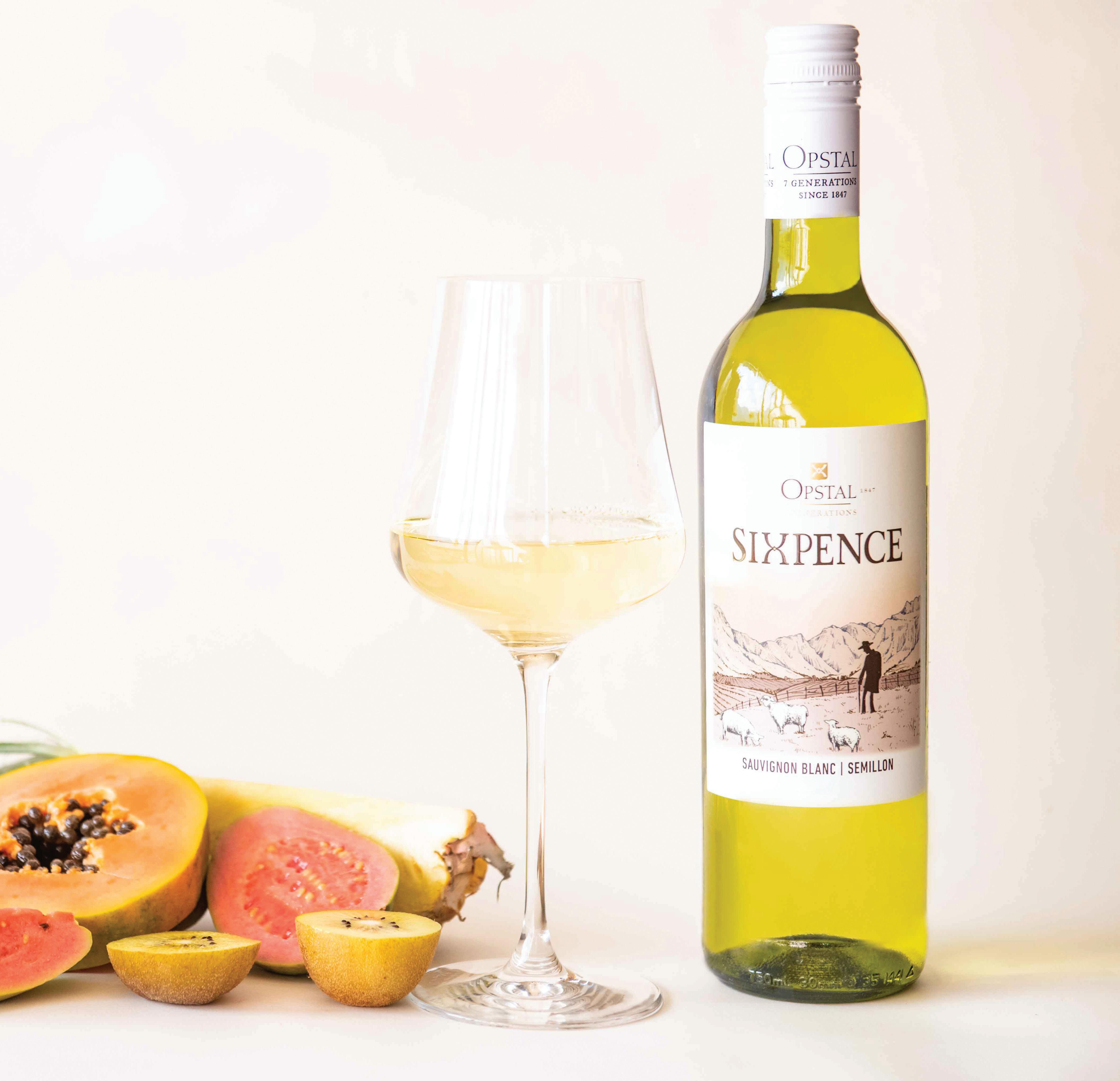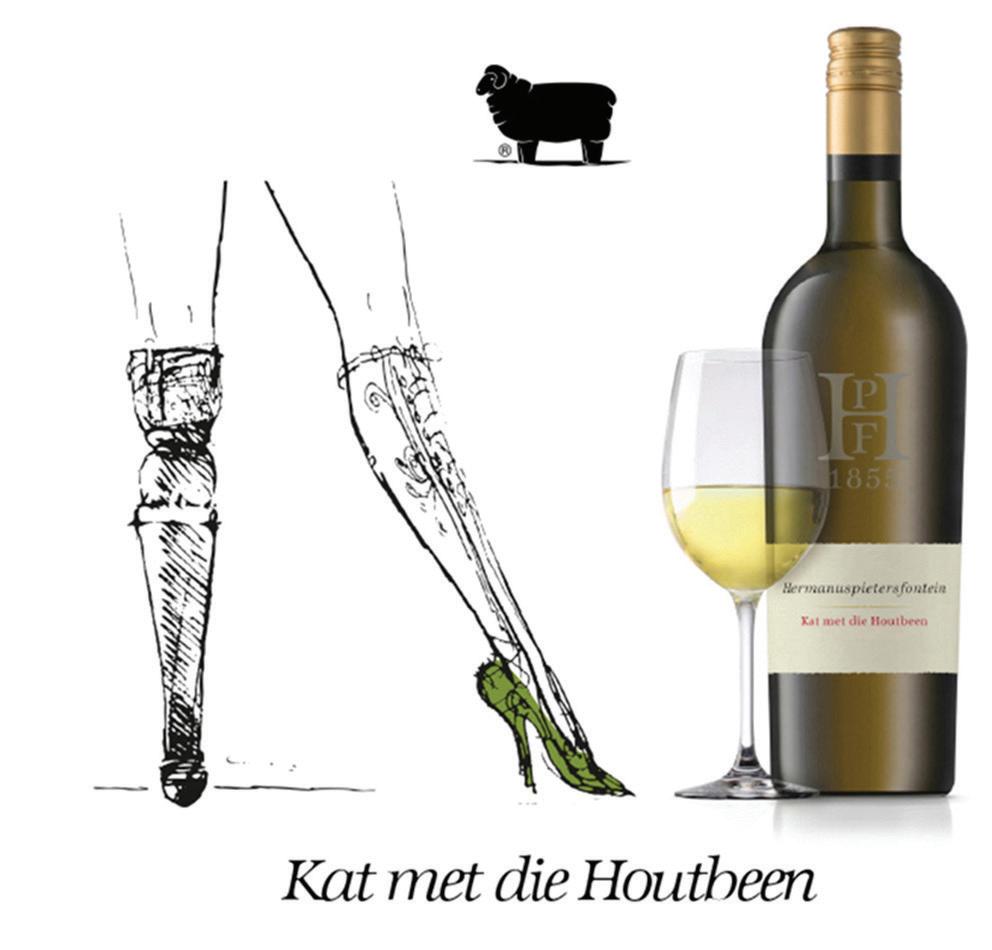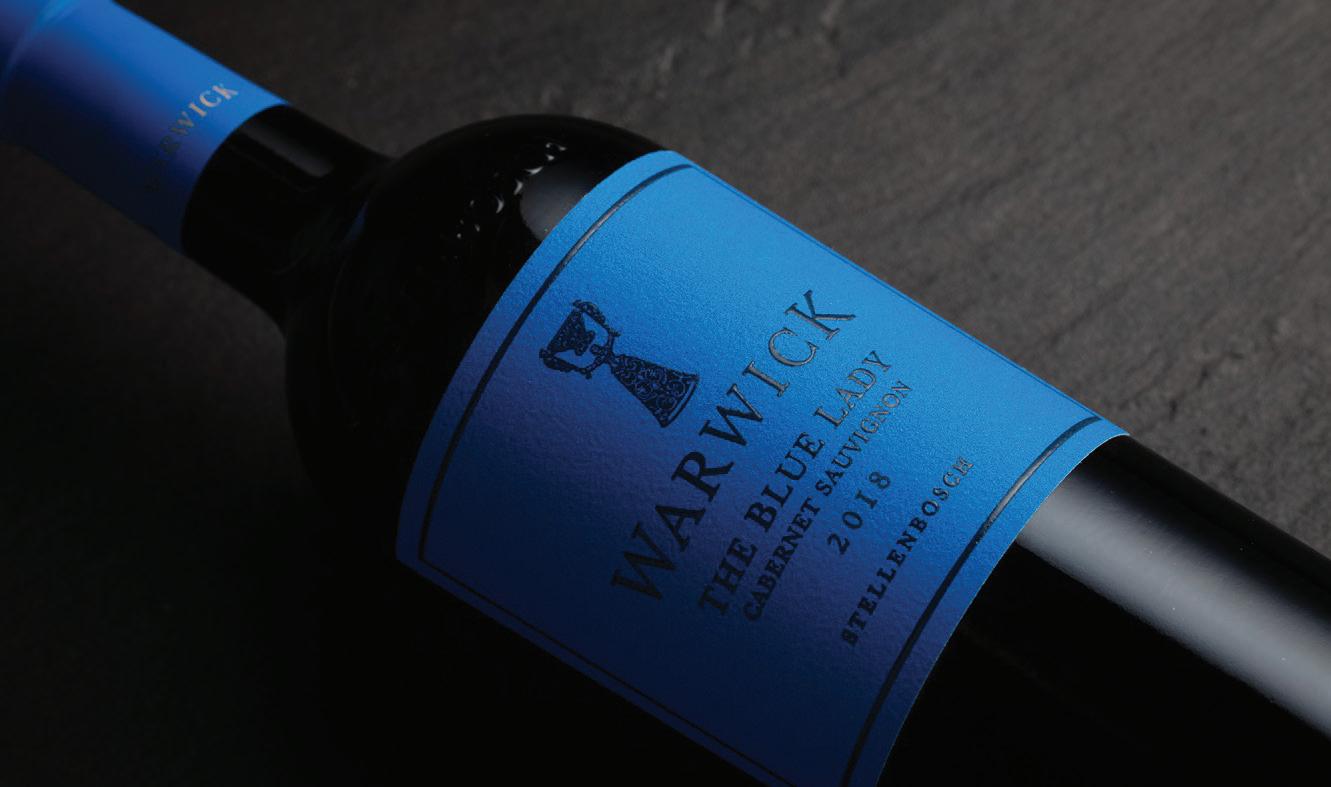
5 minute read
DAVE BIGGS ON SOME OF HIS
Wine is one of only a small handful of agricultural products that are marketed with brand names. Most farm products are sold simply by weight. We happily buy apples, potatoes, lamb chops and bananas without bothering to ask who produced them. We put a dozen eggs into the supermarket trolley with no desire to know the name of the hen that laid them, or even the farm where she lived. When we buy steaks we don’t even ask whether they were taken from black Angus cows, Frieslands or Ayrshires. Beef is beef. Slice it, mince it, make it into biltong: it remains anonymous.
JUST THE TICKET!
Advertisement
David Biggs on some of his favourite local wine labels

But when we reach the wine shelves we carefully scan the rows of labels, wanting to know the farm where the grapes were produced, the variety of grapes that went into the bottle, the year they were harvested, and o en even the name of the particular vineyard in which those grapes grew. Wine producers know this, of course, and try to dress producers know this, of course, and try to dress their products in labels as eye-catching and memorable as possible. It’s a competitive world out there. In some cases, the name of the farm or estate has become so well known and respected that it’s enough to attract buyers without having to think up fancy names. Cellars like Groot Constantia, Alto, Boschendal, Meerlust and Simonsig already have loyal followings, while lesser-known wineries, like Snow eld (Sutherland) and Tshilidzini (Wellington) might need some introduction on the label.
O en the vintners take the easy route when labelling their products and simply give the name of the cellar and variety of grape—Saronsberg Shiraz, for example, or Nederburg Riesling.
Fair enough; you know what you’re getting and where it comes from. You have enough con dence in the winery to know you’ll end up with a bottle of reliably good wine.
In addition to identifying the cellar, wine labels can be used to honour ancestors, pay tribute to historic gures or act as reminders of the winemaker’s family origins. JORDAN WINES’ COBBLERS HILL label, for example, refers to the family’s involvement in the shoe industry. Jordon shoes. e cobbler was traditionally the man who made and repaired shoes.
Wines may be named a er family members, political leaders—or even
dogs. BEYERSKLOOF’S ICONIC DIESEL PINOTAGE, for example, has nothing to do with the liquid tractor fuel. It was named a er a very large boerboel dog called Diesel. e wine’s creator, Beyers Truter, said, “Diesel was more than just a dog. He was a HUGE dog—eyes like a lion, balls of steel, teeth like a scalpel…” Obviously, a dog that won great respect, like the wine.


One interesting wine label pays tribute even to a sh.
SPRINGFONTEIN’S MISS LUCY
has been given one of the many nicknames of the red stumpnose, an endangered sh species. Keen anglers don’t need to be told that, but those who live far from the ocean might nd it confusing.
OPSTAL’S SIXPENCE label honours a humble, but obviously loved, shepherd boy of that name.
Behind the name of MURATIE’S ANSELA VAN DE CAAB there’s a poignant love story of a German soldier, Laurens Campher, who fell in love with Ansela, a beautiful slave girl born in the slave quarters of the Cape Town Castle. Laurens courted Ansela for 14 years, o en walking all the way from Stellenbosch, a three-day journey, to visit her. It was a dangerous liaison and together they had three children even though Ansela was locked up in the slave quarters every night. e story has a happy ending, though, and when Ansela was eventually baptised and freed they were married on Muratie and planted an oak tree on the farm to celebrate the occasion. at oak can still be seen there today.
I see WARWICK’S BLUE LADY label as a tribute to a strong-willed woman: the estate’s winemaker, Norma

Wine Labels | FEATURE Ratcli e. She was determined to put a blue label on her Cabernet Sauvignon, but was advised against using blue for a red wine. She persisted and wanted to call the wine Le Femme Bleu, but was told the name was already taken so she translated it to the now well-known Blue Lady.
Look closely at the Seven Flags label on the PAUL CLUVER CHARDONNAY of that name. You’ll see a bear’s claw on that label too. ey are reminders of a time back in the 1100s when a Cluver ancestor saved the life of the German king by cutting o the claw of a bear that was attacking him. He was rewarded with a knighthood (entitling his family to add a “Von” to their surname) and a family coat of arms that included seven regional ags.
I always enjoy labels with a touch of humour. ey are a reminder that wine and laughter should go together. If it’s not fun, why are we drinking it? It’s all too easy to become pompous and pedantic when referring to wine; ponti cating about technical stu like residual sugar, tannins, oxidisation, pH, mouthfeel, reverse osmosis and skin contact. “Look at me. I am a connoisseur,” they are really saying. Every community has its wine bores! Avoid them if you can.

Some of the quirkiest labels on our shelves come from HERMANUSPIETERSFONTEIN ( e longest-named Cape winery) where they obviously enjoy creating unusual names like Skoonma (motherin-law), Kaalvoet Meisie (barefoot girl) and, best of all, Die Kat Met Die Houtbeen (the cat with the wooden leg). e names tend to re ect the characters of the wines—the stern mother-in-law, the fresh and frivolous barefoot girl and the silky-sinuous cat with an unexpected touch of oak for character. I can’t help falling for an unpretentious, down-to-earth label like the Bergkelder’s Flippenice. e label says it all. at’s all I ask of a wine. If it’s ippen nice I’ll have a glass, thank you. (Okay, sometimes toward the end of the month I may have to settle for Flippencheap.) Next time you’re passing a few unhurried minutes in your local shopping centre, take time to browse the shelves of the wine shop and allow the labels to tickle your imagination.
Wines come in a wide range of prices and some of them may be beyond your budget, but take comfort from the thought that the labels are yours to enjoy completely free of charge. ey’re almost as good as a visit to your local library.










